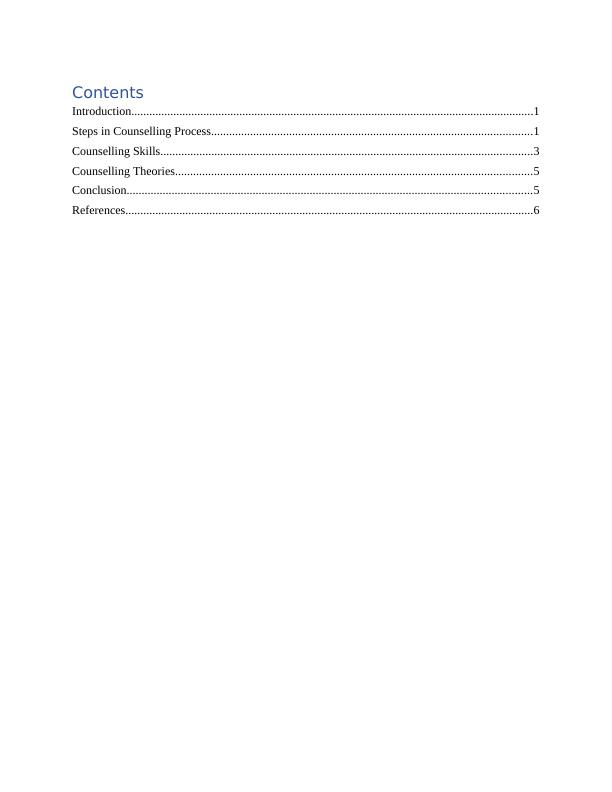The Process of Counselling: Steps, Skills, Theories and Conclusion
Added on 2023-05-31
9 Pages1635 Words70 Views
End of preview
Want to access all the pages? Upload your documents or become a member.
Counselling: Person-Centered and Cognitive Behavioral Techniques
|11
|2686
|355
The Process of Counseling
|5
|1107
|53
Counseling Skills - Assignment
|13
|3364
|139
Core Counseling Overview
|5
|679
|121
Communication Skills in Social Work PDF
|9
|2184
|398
The Traits That Will Help You Thrive as a Counselor
|8
|1709
|18



